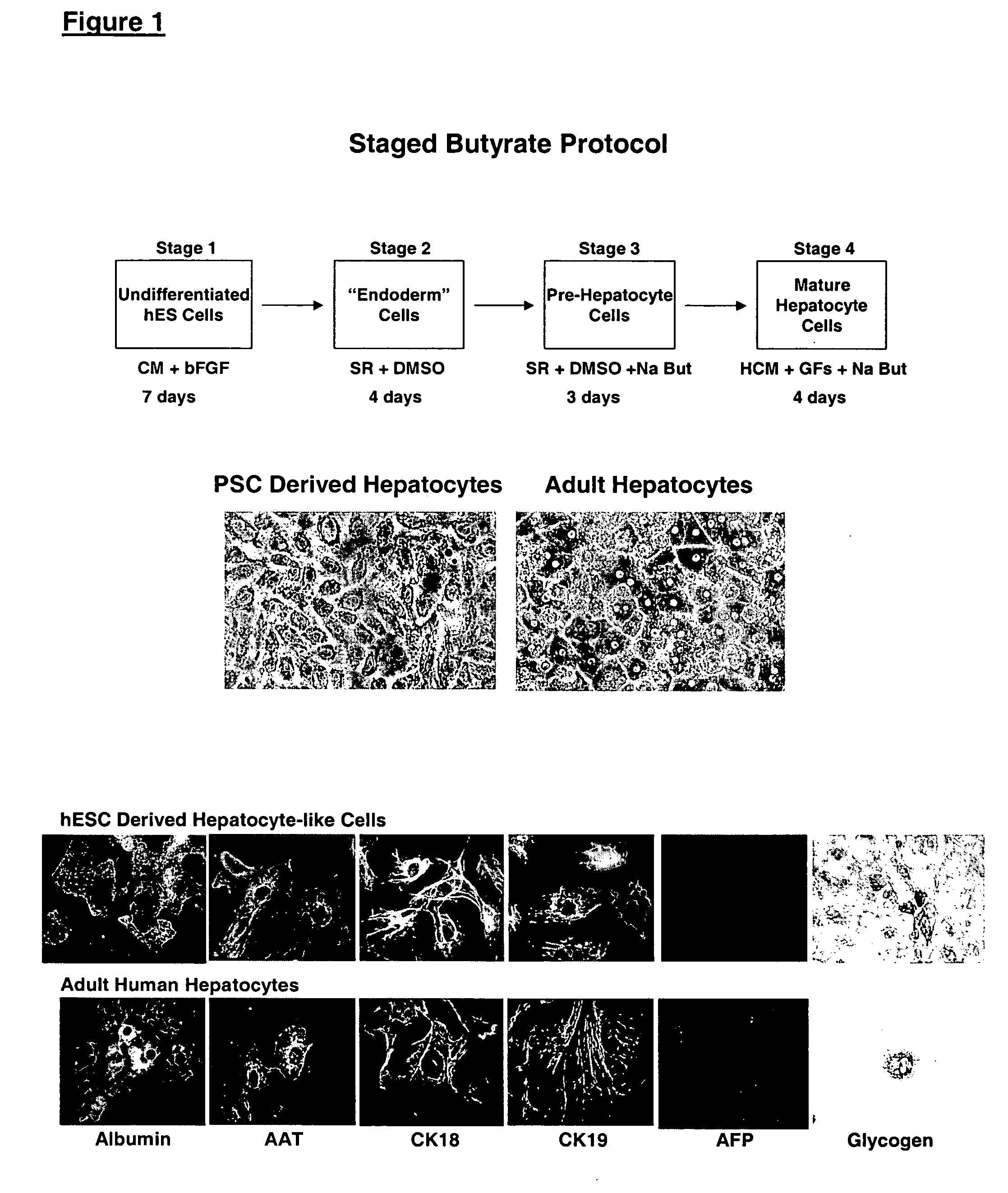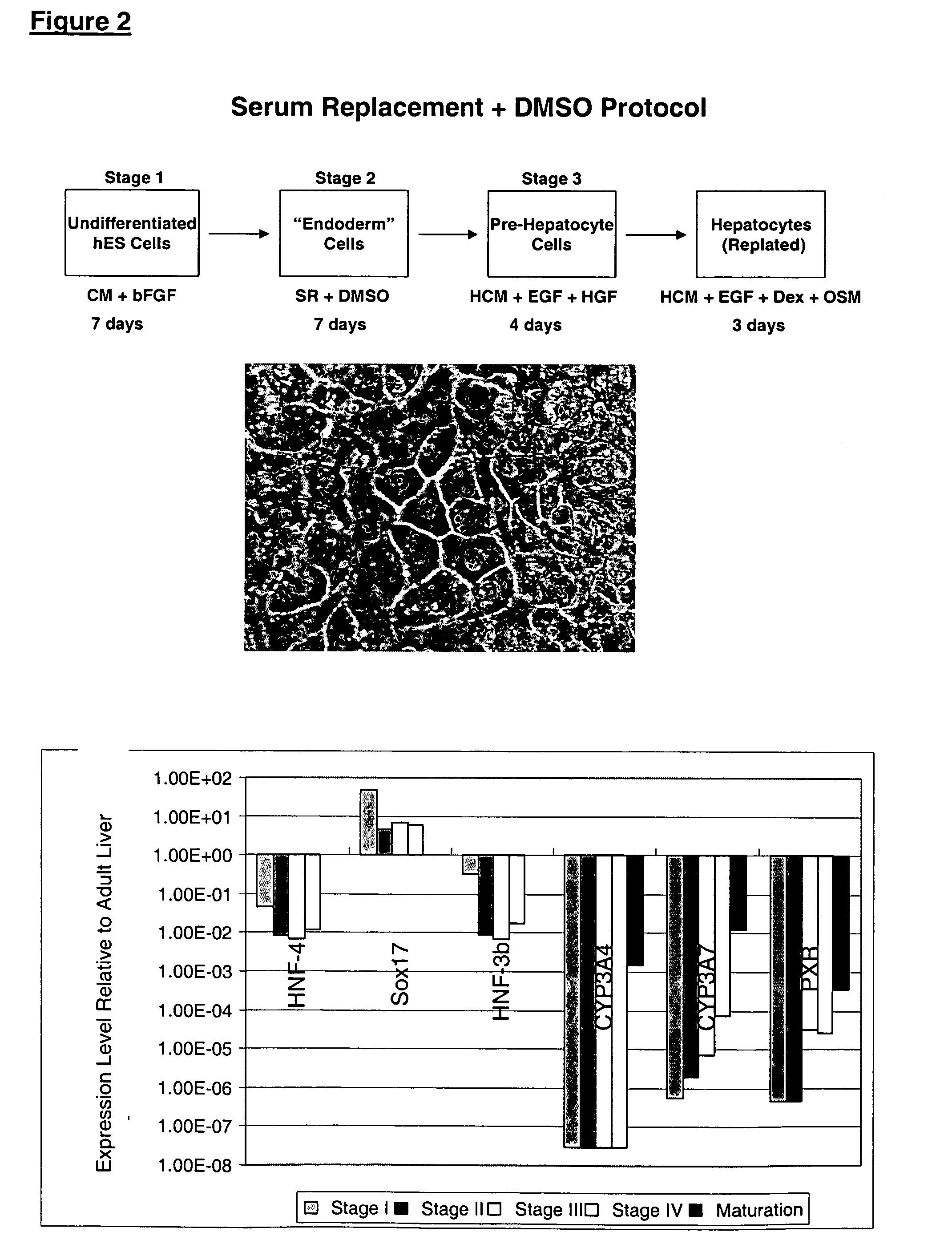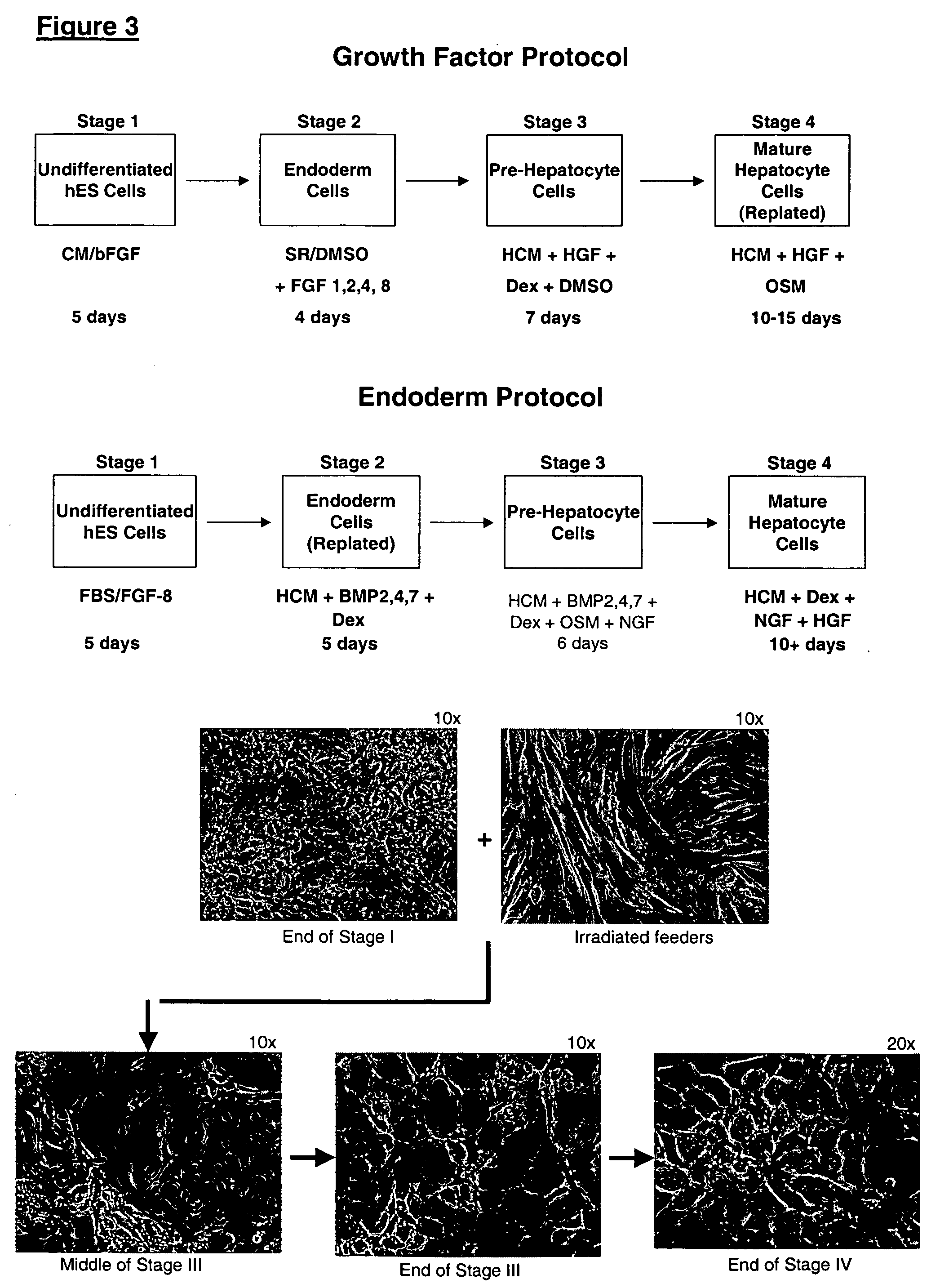Protocols for making hepatocytes from embryonic stem cells
- Summary
- Abstract
- Description
- Claims
- Application Information
AI Technical Summary
Benefits of technology
Problems solved by technology
Method used
Image
Examples
example 1
Differentiation of Human Embryonic Stem Cells Using n-butyrate
In this experiment, hES cells were maintained on primary mouse embryonic fibroblasts in serum-free medium according to standard methods. Embryoid bodies were formed by harvesting the cells with collagenase for 15-20 min, and plating dissociated clusters onto non-adherent cell culture plates (Costar) in a medium composed of 80% KO DMEM (Gibco) and 20% non-heat-inactivated FBS (Hyclone), supplemented with 1% non-essential amino acids, 1 mM glutamine, 0.1 mM β-mercaptoethanol.
The EBs were fed every other day. After 5 days in suspension culture, they were harvested and plated on Growth Factor Reduced Matrigel® coated plates and in chamber slides (Nunc). One of the following three conditions was used in parallel: medium containing 20% fetal bovine serum (FBS); medium containing 20% FBS and 5 mM sodium butyrate (Sigma); medium containing 20% FBS, 0.5% DMSO (ATCC), 4 μM dexamethazone (Sigma), 150 ng / mL insulin, 10 ng / mL E...
example 2
Marker Analysis of hES Cell Derived hepatocytes
hES derived embryoid bodies were plated on Matrigel® coated 6-well plates (for RNA extraction) and chamber slides (for immunocytochemistry) in medium containing 20% FBS and 5 mM sodium n-butyrate. The morphology of the differentiated cells was remarkably uniform, showing a large polygonal surface and binucleated center characteristic of mature hepatocytes.
On the sixth day after plating in the differentiation agent, the cells were analyzed for expression of markers by RT-PCR and immunocytochemistry. Glycogen content in these cells was determined using periodic acid Schiff stain. The number of cells in S phase of cell cycle was determined by incubating the cells with 10 μM BrdU on day 5 after plating, and subsequently staining with anti-BrdU antibody 24 hours later.
A summary of the phenotype analysis is provided in Table 4. Albumin expression was found in 55% of the cells. AFP was completely absent. Glycogen was being stored in at l...
example 3
Differentiation of hES to hepatocyte-Like Cells without Forming Embryoid Bodies
The undifferentiated hES cells were maintained in feeder-free conditions using medium conditioned by mouse embryonic fibroblasts, as previously described (WO 01 / 51616). The strategy was to initiate a global differentiation process by adding the hepatocyte maturation factors DMSO or retinoic acid (RA) to a subconfluent culture. The cells were then induced to form hepatocyte-like cells by the addition of Na-butyrate.
The hES cells were maintained in undifferentiated culture conditions for 2-3 days after splitting. At this time, the cells were 50-60% confluent and the medium was exchanged with unconditioned SR medium containing 1% DMSO. The cultures were fed daily with SR medium for 4 days and then exchanged into unconditioned SR medium containing 2.5% Na-butyrate. The cultures were fed daily with this medium for 6 days, at which time one half of the cultures were evaluated by immunocytochemistry. The oth...
PUM
 Login to View More
Login to View More Abstract
Description
Claims
Application Information
 Login to View More
Login to View More - R&D
- Intellectual Property
- Life Sciences
- Materials
- Tech Scout
- Unparalleled Data Quality
- Higher Quality Content
- 60% Fewer Hallucinations
Browse by: Latest US Patents, China's latest patents, Technical Efficacy Thesaurus, Application Domain, Technology Topic, Popular Technical Reports.
© 2025 PatSnap. All rights reserved.Legal|Privacy policy|Modern Slavery Act Transparency Statement|Sitemap|About US| Contact US: help@patsnap.com



